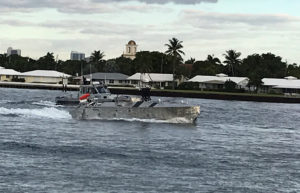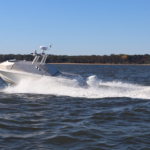
The Government Accountability Office (GAO) denied Textron Systems’ [TXT] protest of the Navy’s Mine Countermeasures Unmanned Surface Vehicle (MCM USV) contract, worth up to $123 million, the office said Aug. 10. The Navy originally awarded the contract to Bollinger Shipyards in April over two other bidders, including Textron, which has worked with the Navy for years on the project. The contract calls for production, engineering services and other costs for three initial MCM USVs at a cost of $14 million…

 By
By 










